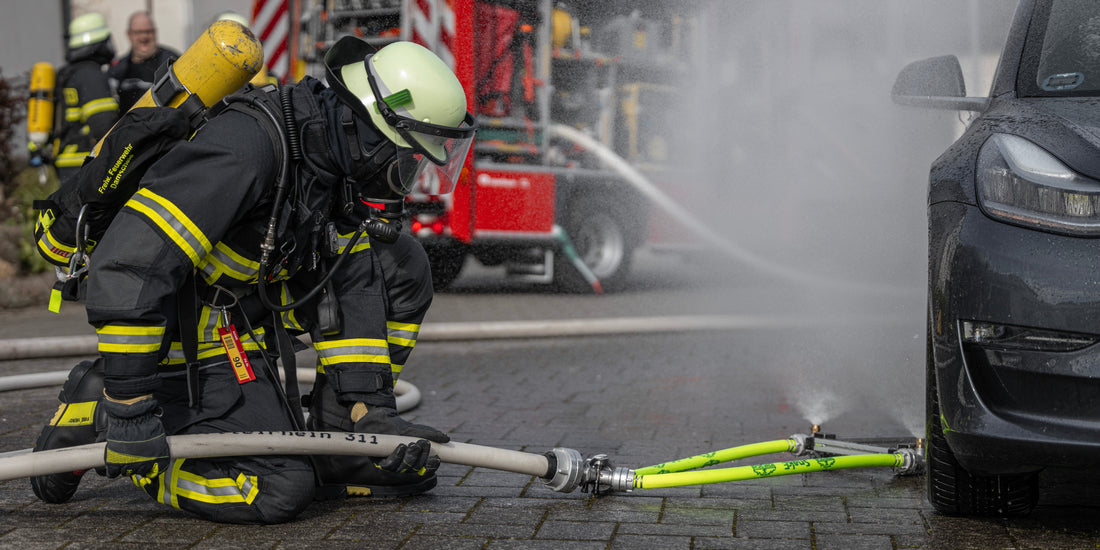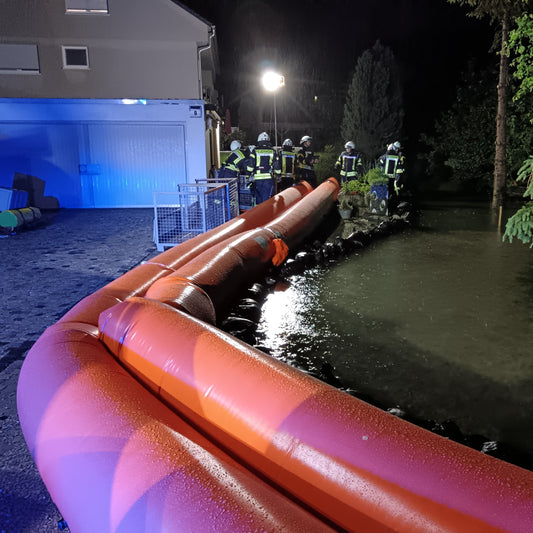
Types of electric drives in cars: Knowledge for firefighters and disaster control
Share
Electric drives in cars: Knowledge for firefighters and disaster control
The increasing prevalence of electric and hybrid vehicles presents new challenges for firefighters and disaster relief agencies. To be able to respond quickly and safely in an emergency, a basic understanding of the various electric drive types and their special features is essential. In this article, we explain the common drive types, their advantages and disadvantages, and their relevance for rescue operations.
1. Overview of electric and hybrid drive types
1.1 Battery electric vehicles (BEV)
BEVs are powered exclusively by an electric motor that draws its energy from a large battery. These vehicles do not have an internal combustion engine.
Areas of application : Ideal for city traffic and medium ranges.
Advantages : Emission-free operation, quiet, low maintenance costs.
Disadvantages : Limited range, long charging times, high purchase costs.
1.2 Plug-in hybrid vehicles (PHEV)
PHEVs combine an electric motor with a combustion engine. The battery can be charged both by the combustion engine and by external charging.
Areas of application : Flexible for short electric distances and long journeys.
Advantages : Greater range than BEVs, reduced emissions in urban traffic.
Disadvantages : Higher weight, more complex technology, higher maintenance costs.
1.3 Hybrid vehicles (HEV)
HEVs also use an electric motor and a combustion engine, but without external charging. The battery is charged through recuperation (energy recovery during braking) and the combustion engine.
Areas of application : Particularly efficient in city traffic.
Advantages : No charging infrastructure required, lower fuel consumption.
Disadvantages : Limited electric range, continued dependence on fossil fuels.
1.4 Fuel cell vehicles (FCEVs)
FCEVs generate electrical energy through a chemical reaction of hydrogen and oxygen in a fuel cell. The electric motor is directly powered by the generated energy.
Areas of application : Longer distances, especially in heavy goods transport.
Advantages : Fast refueling, long range, emission-free operation (only water vapor).
Disadvantages : High costs, limited availability of filling stations, complex technology.
2. Relevance for the fire service
2.1 Challenges in rescue operations
The different drive types bring with them specific hazards and requirements:
High-voltage batteries : In BEVs, PHEVs, and FCEVs, high-voltage batteries can release dangerous voltages if damaged. Thermal runaway (uncontrolled heat buildup) can lead to fires that are difficult to extinguish.
Hazardous substances : FCEVs pose a risk of hydrogen leaks, which can lead to explosions.
Complex vehicle architecture : Hybrid vehicles have more components, making rescue operations more difficult.
2.2 Necessary knowledge for emergency services
Identification of the drive system : Emergency responders must quickly identify the type of drive system. Information can be found on vehicle stickers or in rescue data sheets.
Handling high-voltage systems : Special training is required to safely handle and deactivate high-voltage systems.
Firefighting : Lithium-ion batteries require special extinguishing techniques, such as the use of the SnakE extinguishing system .
3. Conclusion: Why this knowledge is indispensable
The increasing number of electric and hybrid vehicles means that firefighters and emergency responders are regularly confronted with these technologies. A thorough understanding of these drive systems and their associated risks is crucial to saving lives and minimizing hazards. Investments in training and equipment are therefore essential to meet the challenges posed by modern vehicle technologies.
With this knowledge, emergency services can act safely and efficiently – in keeping with our mission: safety made simple .



